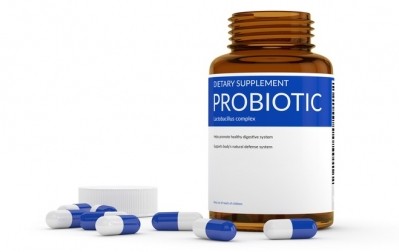Guest article
The irrationality of probiotic dissension

Prof Reid is affiliated with the Canadian R&D Centre for Human Microbiome and Probiotics, Lawson Health Research Institute in London, Ontario, and the Departments of Microbiology and Immunology, and Surgery at Western University in London, Ontario.
Prof Reid’s submission to JAMA:
The irrationality of probiotic dissension
In recent times, articles have been published that not only raise questions about probiotic safety and efficacy but dismiss the whole field as if it were illegitimate and a money-making fraud [1,2]. Ignoring or incorrectly stating the definition of the term [1], such articles then cite studies to suit their argument.
The most recent inflammatory article published by JAMA [1] starts with quotations from mysterious ‘medical professionals’ and refers to probiotics as ‘these substances’. A strange term for live bacteria and yeast. Again, without reference, the authors state there is ‘paucity of high-quality data’, with ‘high-quality’ undefined. Then they accuse authors (without substantiation) of ‘potentially biased reviews’. It seems incredible in this day and age of peer-reviewed science that such wording was accepted for publication. If authors of reviews on probiotics are indeed biased, Freedman et al should specify who they are, and which components of their reviews are biased. It is ludicrous to accuse or imply that all authors have purposeful bias. Without question, inadequacies and limitations of meta-analyses need to be stated and studies showing lack of efficacy published. Probiotics are not a cure-all magic bullet, but strains have their place in health management based on human studies [3-6].
Still in the introductory paragraph, Freedman et al. state ‘the complex framework in which probiotics are regulated and sold’. This suggests the authors find the framework complex, but it would be interesting to know if the FDA, Health Canada and other regulators have reported on such complexity. There is nothing complex about the categories under which products are regulated or sold. A probiotic is almost always a capsule or in a food. This is hardly complex!
The introduction closes with the statement ‘the limited but increasingly concerning safety information’, again without citation. Unfortunately, they did not cite a paper stating how to deal with probiotics for at-risk populations [7]. Had the authors studied the known cases of probiotics causing harm compared to the volumes sold worldwide per day, they would easily conclude that drugs approved for human use are vastly more dangerous. Indeed, the high numbers of Americans dying annually from reactions to prescription drugs [8] has raised questions about corruption in that industry [9].
It is worrying that the Freedman article makes a series of assumptions about what consumers and physicians think and what motivates them to purchase products. The authors appear to believe that all probiotic products are the same.
Suggesting that ‘high-quality trials to evaluate probiotic efficacy are difficult to conduct’ is also unsubstantiated and makes little sense. Strangely, in discussing clinical trials and risk-of-bias, instead of citing actual trials they cite a review by Suez et al. [10] whose own clinical study of a mere 8 healthy subjects given high dose antibiotics then a ‘probiotic’ supplement made overly generalized conclusions about a whole field of science [11].
It is odd to question the validity of meta-analyses, despite them certainly having limitations, when the medical field in general uses this method as the foundation for evidence-based practice [12]. Using the word ‘misconduct’ again implies that researchers performing clinical studies on probiotics are cheating. If this is suspected, Freedman et al. should state examples. Instead, they make a sweeping statement that the reason for meta analyses showing benefits of probiotics is flawed and a ‘classic example of this conundrum.’ In criticizing reviews, they strangely do not cite the most recent one on Lactobacillus rhamnosus GG showing benefits for treating acute gastroenteritis in children [4].
The final discussion points are perhaps the most disturbing. They imply, without any substantiation, that probiotic researchers and producers state actively that probiotics are ‘harmless’. In doing so, they cite a pancreatitis study without any of the important papers clarifying how it was conducted and what it concluded. Allowing this viewpoint to make unsubstantiated statements like ‘these studies are the tip of the iceberg’ is frankly bewildering for a peer-reviewed journal. It is further ironic since the authors suggest that ‘some journals may be insufficiently critical in reviewing probiotic studies’. Concerns over the peer-review of this viewpoint by JAMA can be extended to other points made in the article. For example, on the issue of antibiotic resistance gene transfer, the authors provide zero evidence that this is primarily due to probiotics. Further without any evidence, they state that physicians are willing to suggest probiotics because products are available. Could it not just as easily be that drug therapy is not working, or causing side effects or there are no effective drugs for certain conditions or patients? The criticism of ‘financial conflicts of interest’ is easy to include but requires extensive discussion. Without industry, products would not be available for consumers. But implying that researchers somehow manipulate the data or present false results on probiotics just because a company sponsored the trial is not a subject matter to be glibly added on to this viewpoint.
The article closes by essentially stating that all probiotics should be regulated as drugs. Perhaps the authors would prefer that the public not have access to yogurt until drug companies take over its production, perform the necessary studies then sell it at quadruple its current price. In that ten or more year interim, one wonders what yogurt consumers will do. Indeed, will the likely resultant claims that already exist pertaining to gut transit time or lactose intolerance really make it worthwhile for the drug companies? Or is their armamentarium and pipeline running so low they might as well make yogurt?
And by the way, a reminder that if probiotic products or manufacturers are to be criticized, please state the product name, the strain designations and the specific failing of the manufacturer under discussion.
Conflicts of interest: In the past year, I have received in-kind probiotic strains from Chr Hansen, UAS Labs, and Seed, and have provided consulting services to Chr Hansen and Seed. I am a member of the Board of Directors of the International Scientific Association for Probiotics and Prebiotics but none of my comments represent their views or opinions.
JAMA did not respond to a request to comment from NutraIngredients-USA.
Literature cited by Prof Reid:
[1] Freedman SB, Schnadower D, Tarr PI. The probiotic conundrum: Regulatory confusion, conflicting studies, and safety concerns. JAMA. 2020; 323(9): 823-824. doi:10.1001/jama.2019.22268.
[2] Abbasi J. Are probiotics money down the toilet? Or worse? JAMA 2019; 321(7): 633-635. doi:10.1001/jama.2018.20798
[3] Szajewska H, Hojsak I. Health benefits of Lactobacillus rhamnosus GG and Bifidobacterium animalis subspecies lactis BB-12 in children. Postgrad Med. 2020 Feb 26:1-11. doi: 10.1080/00325481.2020.1731214.
[4] Szajewska H, Kołodziej M, Gieruszczak‐Białek D, Skórka A, Ruszczyński M, Shamir R. Systematic review with meta‐analysis: Lactobacillus rhamnosus GG for treating acute gastroenteritis in children – a 2019 update. Aliment Pharmacol Ther. 49(11): 1376-1384. https://doi.org/10.1111/apt.15267.
[5] Deshpande G, Jape G, Rao S, Patole S. Benefits of probiotics in preterm neonates in low-income and medium-income countries: a systematic review of randomised controlled trials. BMJ Open. 2017 Dec 7;7(12):e017638. doi: 10.1136/bmjopen-2017-017638.
[6] Ford AC, Harris LA, Lacy BE, Quigley EMM, Moayyedi P. Systematic review with meta-analysis: the efficacy of prebiotics, probiotics, synbiotics and antibiotics in irritable bowel syndrome. Aliment Pharmacol Ther. 2018 Nov;48(10):1044-1060. doi: 10.1111/apt.15001.
[7] Sanders ME, Merenstein DJ, Ouwehand AC, Reid G, Salminen S, Cabana MD, Paraskevakos G, Leyer G. Probiotic use in at-risk populations. J Am Pharm Assoc (2003). 2016 Nov - Dec;56(6):680-686. doi: 10.1016/j.japh.2016.07.001.
[8] Lazarou J, Pomeranz BH, Corey PN. Incidence of adverse drug reactions in hospitalized patients: a meta-analysis of prospective studies. JAMA. 1998 Apr 15;279(15):1200-5.
[9] Light DW, Lexchin J, Darrow JJ. Institutional corruption of pharmaceuticals and the myth of safe and effective drugs. J Law Med Ethics. 2013 Fall;41(3):590-600. doi: 10.1111/jlme.12068.
[10] Suez J, Zmora N, Segal E, Elinav E. The pros, cons, and many unknowns of probiotics. Nat Med. 2019 May;25(5):716-729. doi: 10.1038/s41591-019-0439-x
[11] Suez J, et al. Post-antibiotic gut mucosal microbiome reconstitution is impaired by probiotics and improved by autologous FMT. Cell. 2018 Sep 6;174(6):1406-1423.e16. doi: 10.1016/j.cell.2018.08.047.
[12] Acton GJ. Meta-analysis: a tool for evidence-based practice. AACN Clin Issues. 2001 Nov;12(4):539-45.















